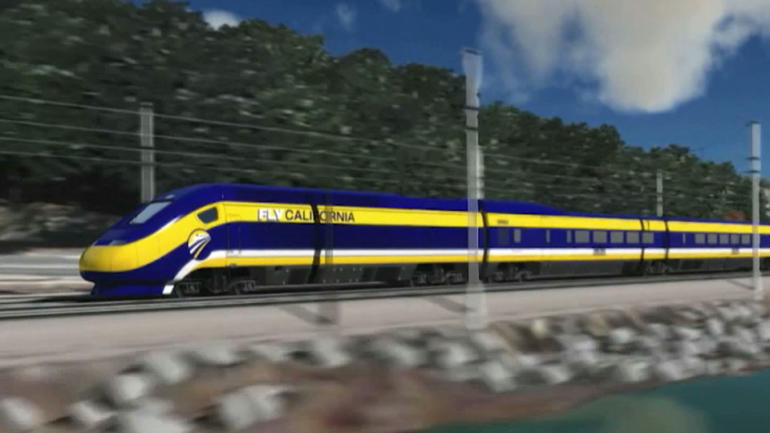It is one of America’s biggest infrastructure projects – a high-speed rail system that would move passengers from San Francisco to Los Angeles in about 2 1/2 hours.
But the state’s governor shook the rails, when he said recently that the project as currently planned would cost too much and take too long.
There is currently no high-speed rail, categorized as above 300 km per hour, in America. CGTN’s Mark Niu set out to find out why.
California Governor Gavin Newsom surprised supporters of high-speed rail when he stressed the importance of building a small route through California’s Central Valley, while highlighting the difficulties of completing the full project from San Francisco to Los Angeles.
“Been able to ride systems all around the world and I’m jealous,” said Rod Diridon Sr., Retired Emeritus Executive Director at the Mineta Transportation Institute.
Diridon served as the chair of California’s high-speed rail authority from 2001 to 2003 and is known as the father of modern transit service in Silicon Valley. The train station in the city of San Jose bears his name.
Diridon says the high-speed rail project has had to contend with numerous lawsuits claiming adverse impact on the environment.
“You have opponents who are concerned about the projects because they want to protect their land. Well that’s credible and they get a better value for the land if they fight,” said Diridon. “At the same time we have opponents who are not credible, like the oil companies who do not like high-speed rail because it will reduce the amount of fuel they can sell to short hop airlines or to automobiles.”
Here’s what the United States would look like if it had high-speed rail lines that traveled as fast as China’s current Fuxing train.
The purple circles represent one hour of travel, while the yellow ones are 4.5 hours of travel time. Click on the map to learn more.
Diridon believes Governor Newsom is not going to quit on the full project, despite the original estimate of $33 billion ballooning to between $77 and $98 billion, and the completion date moving from 2022 to 2029.
“You can’t tell me that the richest state in the richest country in the world can’t afford it,” said Diridon. “When countries like Spain which is going into bankruptcy, and Morocco and Turkey, and so on can afford high-speed rail, we can afford it. It’s a matter of doing it.”
But others say it’s not that easy.
“What the voters voted for was something that was incredibly appealing but was always pie in the sky,” said Stanford History Professor Richard White.
White is the author of “Railroaded”, which examines the history of the transcontinental railroad. He says one reason there are no high-speed trains in the U.S. is the economics.
“Where you make money in railroads is hauling freight, not hauling people,” said White. “And in the United States, particularly with the creation of Amtrak, they siphoned off the old passenger traffic and gave it to the government, which is always going to be at a loss.”
White says another problem is that land values go up near stations where passengers disembark. Thus, while property values go up for private investors, it’s essentially a huge subsidy paid for by the public. It’s money they don’t get back.
And yet another challenge is that most U.S cities are not built with high-speed rail in mind.
“You get off a high-speed train in Japan, Paris, or in China, you immediately connect to a vibrant transportation system,” said White. “In the United States, that’s not the case, you end up in a place, probably you are going to rent a car, which is the whole idea of not taking it to begin with.”
“If you comment on what you see now and say we’re not perfect for high-speed rail, maybe you’re right,” said Diridon. “But think about what we’re going to be 20, 30, 40 years from now. And then you’ll realize this is the perfect time for high-speed rail.”
Despite tech companies already working on everything from hyperloop tunnels to self-driving cars, Diridon insists demand for high-speed rail will remain high, because it’s a proven technology that helps keep drivers off the road.
 CGTN America
CGTN America

